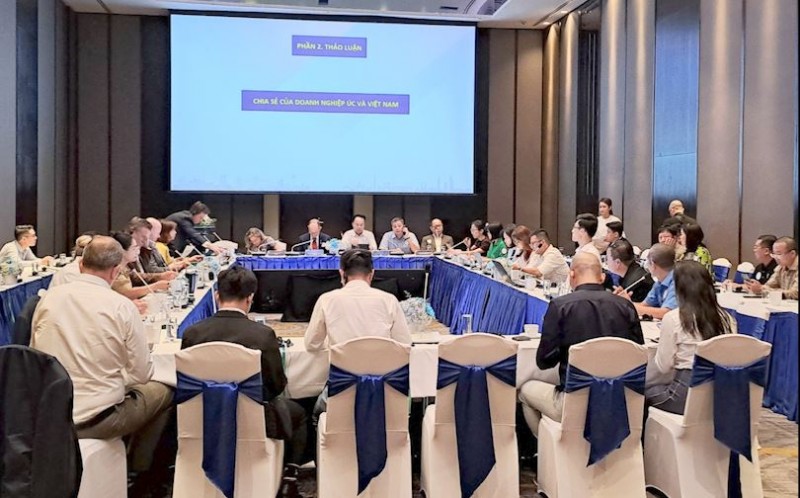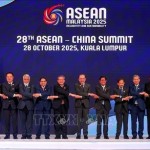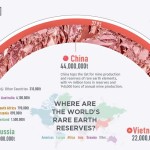Total number of posts 435.
Sharing on the sidelines of the seminar "Maximizing import and export opportunities between Vietnam and Australia through Free Trade Agreements", organized by the Ministry of Industry and Trade in collaboration with the Australian Embassy on September 6, Mr. Huynh Quang Thanh - Director of Hiep Long Furniture Company said: In addition to the main markets of the EU, the US, the Middle East, Japan, businesses are looking for export opportunities through markets such as Australia.
Assessing this market potential, Mr. Thanh said that this is a market with a good economy and high affordability. "In fact, there are already customers in the EU who buy and sell back to Australia. This shows that this market demand is still there," Thanh shared.
Similar to furniture, many seafood businesses also promote when exploiting the Australian market. Ms. Le Hang - Communications Director of the Vietnam Association of Seafood Exporters and Processors (VASEP) said that since the Comprehensive and Progressive Agreement for Trans-Pacific Partnership (CPTPP) came into effect, seafood enterprises have made good use of tariff advantages to export to Australia. However, inevitably the general trend of the market, in the first 7 months of 2023, seafood exports to Australia decreased by 23% over the same period. However, compared to major export markets such as the US, EU, and China, this market still has many bright spots. It is expected that by the end of the year the market will be better.
To Ngoc Son, Deputy Director General, Asia-Africa Market Department, Ministry of Industry and Trade, said that Australia in 2022 has become Vietnam's 7th largest trading partner. On the other hand, Vietnam is Australia's 10th partner.
In the first 7 months of 2023, Vietnam's exports to Australia are also slightly affected by the slowing trade trend due to economic slowdown, turnover reached 2.8 billion USD, down 14.7%. The main export groups of Vietnam to Australia include phones and components, machinery, equipment, tools and spare parts; computers, electronic products and components, fisheries; agricultural products, textiles, garments.
Regarding FTA negotiation and implementation, Mr. Ngo Chung Khanh, Deputy Director General, Multilateral Trade Policy Department, Ministry of Industry and Trade, said: Vietnam and Australia are currently joint members of at least 3 FTAs including CPTPP, Regional Comprehensive Economic Partnership (RCEP) and ASEAN Australia-New Zealand Free Trade Agreement (AANZFTA). If CPTPP and AANZFTA help reduce tariffs, RCEP helps businesses take advantage of rules of origin requirements. This helps export growth between Vietnam and Australia to always be high.

Vietnamese - Australian enterprises share experiences in market exploitation
However, Khanh pointed out a paradox that investment from Vietnam to Australia has not increased despite the availability of bridging tools such as FTAs. According to him, this is because the technical factors in the commitment are difficult to implement and Vietnamese businesses still do not know the details of FTAs to access new opportunities.
According to Mr. Khanh, Vietnam has plenty of room for bilaterally to increase import and export activities of strategic goods into each other's markets. Therefore, Vietnamese enterprises need to exploit the benefits from FTAs to rebalance the trade balance.
What Vietnamese businesses need to pay attention to to take advantage of opportunities for success
Mr. Pham Dinh Thuong - Director of KTPC Free Trade Agreement Investment Consultancy and Utilization Company - said that Vietnam's exports to the world have continuously grown since before FTAs. After FTAs are signed and put into effect, the growth rate will be even stronger. However, with the Australian market, the growth rate is somewhat slower.
Explaining the reason for this situation, Mr. Thuong said that in order to export to this market, enterprises must meet very strict standards. However, at present, the attention of Vietnamese enterprises to export standards of other countries is still limited. Especially, with new-generation trade agreements such as CPTPP, labor and environment are important standards, but Vietnamese businesses have not paid much attention. Besides, with new-generation FTAs, in order to take advantage of preferential opportunities, Vietnamese goods must meet rules of origin. However, the source of raw materials with many industrial production items has not yet met, textiles, footwear typically...
According to Mr. Thuong, to take advantage of opportunities, businesses need to pay attention to standards, product packaging, improve production processes, meet labor and environmental standards, standards of antibiotic residues, pesticides ... At the same time, develop and implement a sustainable development strategy. Currently, green, digital, clean ... is the trend. But in fact, in many areas, businesses have not focused on the environment and labor and have received consequences, apparel, seafood typically. In addition, enterprises need to diversify supply, cooperate to reduce costs and meet rules of origin, and regularly update market information through import partners.
Meanwhile, Mr. Huynh Quang Thanh - Director of Hiep Long Wood Company said that compared to other markets, Vietnam has not had many business delegations to promote trade through the Australian market. Therefore, the State needs to organize more trade promotion delegations through this market, to create opportunities for businesses.














